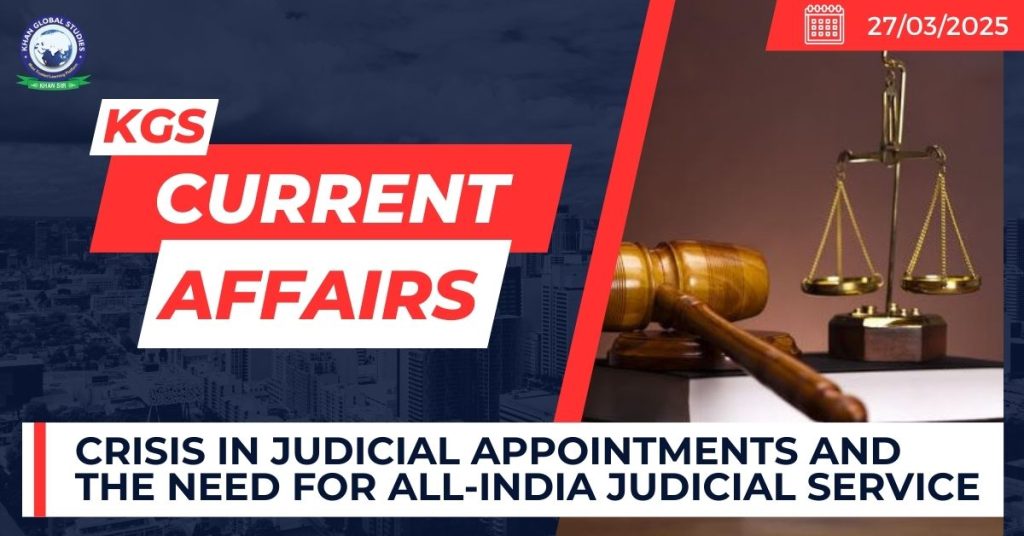Context:
In recent times there have been controversies surrounding judges leading to calls for a more transparent appointment process through an All-India Judicial Services (AIJS).
Recent Controversies in the Judiciary
- Justice V. Chitambaresh of the Kerala High Court made controversial statements praising the Brahmin community for their “clean habits” and “lofty thinking.”
- Lekshmana Chandra Victoria Gowri, a former political leader and newly appointed judge of the Madras High Court, made divisive remarks about Christians and Muslims.
- A fire recently broke out at the residence of Justice Yashwant Varma of the Delhi High Court, allegedly leading to the discovery of sacks of currency notes.
Current Appointment Process of Judges
High Courts:
- Article 217 of the Constitution states that a High Court (HC) Judge is to be appointed by the President in consultation with the Chief Justice of India (CJI) and the Governor of the State.
- For the appointment of judges other than the Chief Justice (CJ) of the HC, the latter is also consulted. The HC CJ is required to consult with two senior-most colleagues.
- The CJ of the HC initiates the proposal for the appointment of a judge to the HC.
- The Union Law Minister considers this proposal and seeks the advice of the SC Collegium comprising the CJI and two senior-most SC judges. The Law Minister then forwards the recommendations to the Prime Minister.
- The PM advises the President on the appointment, following which the Law Ministry issues a notification in the gazette.
Subordinate Judicial System:
- Articles 233 and 234 of the Constitution of India deal with the appointment of district judges.
- The recruitment of district judges is conducted by State Public Service Commissions and the concerned High Court.
- After the examination, panels of High Court judges interview candidates and select them for appointment.
Flaws in the Current Judicial Appointment Process
- Names of judicial candidates are made public only after the collegium’s selection, preventing public input before appointments are finalized.
- The government can withhold crucial information from the collegium, thereby influencing the selection process in favor of its own preferences, which undermines judicial independence.
- There is no standardized, publicly available set of criteria for judicial selection, leading to the possibility of arbitrary decisions.
All-India Judicial Service (AIJS)
- Article 312 of the Constitution, amended by the 42nd Amendment, provides for the creation of AIJS.
- A resolution must be adopted by the Council of States (Rajya Sabha) with a two-thirds majority.
- AIJS aims to centralize the recruitment of judges for the lower judiciary, specifically for positions like additional district judges and district judges, across all states.
The Need for All-India Judicial Service (AIJS)
- The AIJS would create a full-time, independent body to assess judicial candidates based on clear criteria such as competence, integrity, judicial temperament, and social sensitivity. This would eliminate nepotism and arbitrariness.
- Improve the overall quality of the judiciary by attracting top talent, particularly to the subordinate judiciary, which is a key feeder for higher judicial appointments.
- Address issue of severe shortage of judges and thereby judicial pendency. AIJS would help meet this demand by attracting competent candidates to serve at both the High Court and the Supreme Court.
- Increase representation from marginalized communities and ensure diversity in the judiciary.
Challenges in Implementing AIJS
- Resistance from the judiciary, particularly the collegium system, which is concerned that AIJS would undermine judicial independence.
- The government’s proposal for a National Judicial Appointments Commission (NJAC) was struck down by the Supreme Court in 2015, and the delay in finalizing the Memorandum of Procedure (MoP) has further worsened the situation.

